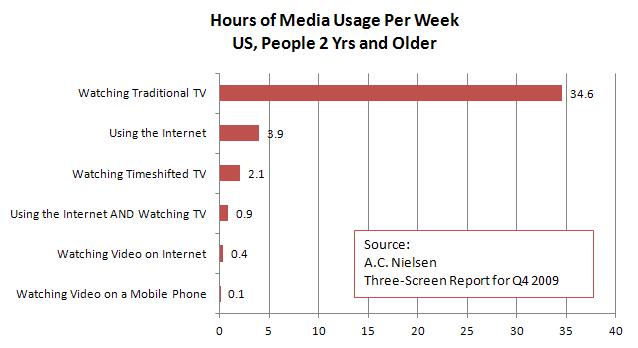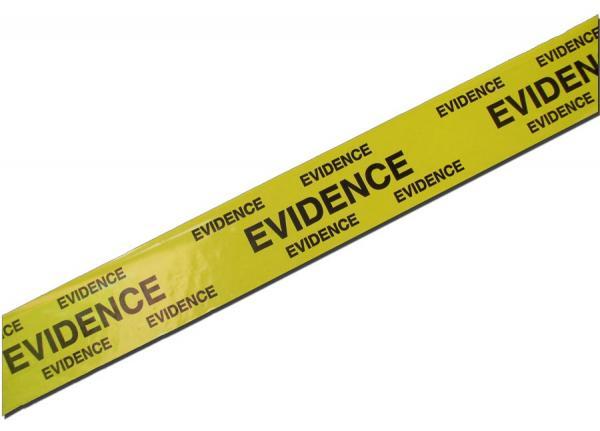Measurement is No Substitute for Thinking BIG
Oct 7, 2010 Marketing And Advertising Analytics, Statistics, Web Analytics
Whether you are doing SEO for a site or running paid search for one, running display ad campaigns or social media, everyone is trying to measure the same thing – they are trying to find evidence that what they are doing is worth the money and time it costs.
There is a point of view (not necessarily mine) that says: If you have to do a complicated analysis to see the effect of a marketing initiative, then it wasn’t very effective. There is some truth there. It is easier, statistically speaking, to measure a BIG marketing impact than it is to measure a small one.
Reality is complicated, though. If you are engaged in “filling the funnel”, you want to know how how that translates – in the long run – into actual sales. However, unless you can wait until there is data for the whole decision and purchase process to make any decisions about how to manage the campaign and the channel, then you will have to go with measuring some intermediate impact.
It is almost a certainty that enough other things will happen to impact sales in the time between your funnel-filling campaign and the sales it ultimately leads to. Enough things to muddy the waters about how much of of your success (or lack of it) came from the lagged effect of your funnel-filling efforts. Unless the effect is big.
This is not to say that measurement is not necessary for early-stage marketing activities, but to say that you have to apply some common sense to your measurement problems, and one bit of marketing common sense is this: think BIG. Now think BIGGER. You should always be aiming to have a big effect – you won’t always succeed in a huge way, but it should not be for lack of trying.
Here’s an idea: Every time you create a campaign, a marketing tactic, an ad, you should at least TRY to do some creative thinking that taps into one or more sources of disproportionate (on the BIG side) response. What well-defined and targetable group would have a peculiar affiinity with your message and your product? What would make them want to know more NOW, click NOW, buy NOW?
What does that have to do with measurement? Two things:
1. Even if your BIG idea doesn’t work, you are actually testing a hypoethesis and so you have gotten just a little smarter.
2. Your goal is to produce impact so BIG that you don’t even really need to measure it to know that the effort was ROI-positive. (But you are measuring it anyway, so you can explain why the next one needs to have a bigger budget!) And – falling short of a really BIG goal will get you to positive business results more often than falling short of modest goals.
Tags: Andre the Giant, BIG, Campaign Measurement, Marketing Analytics, Online Advertising, Scale of Marketing Effects, SEO, Social Media, Statistics
Digital Marketers Should Not Act As If TV Doesn’t Exist (There’s An Elephant in the Room)
May 26, 2010 Industry News
A lot of digital media analysis is very compartmentalized, meaning that the effectiveness of social media focuses exclusively on direct measures of social media and measures of desired outcomes. I think this is very risky. By not including causal variables like spending in adjacent marketing channels (in this case search, email, and display) or nearly ubiquitous channels (TV), you run the risk of confusing the effects of your efforts with the impact of exogenous factors you do not control.
Let’s say you are analyzing the digital marketing efforts for a client that invests heavily in websites, display advertising, paid search, SEO, email, and social media. Let’s say they are also big spenders in traditional media, like TV for instance. Analyzing the effectiveness of your online efforts without have some measure of tv spending or exposure in your mix of causal variables is a bit like trying to say never mind the sun, your flashlight caused the day to begin. That’s an exaggeration, but take a look at the average weekly usage numbers from the Q4 2009 edition of the Nielsen Three-Screen Report (http://en-us.nielsen.com/main/insights/nielsen_a2m2_three):
People watch their TVs nearly nine times longer per week than they use the internet. Also, TVs reach more households than the internet. I’m not saying every analysis needs to be a marketing mix analysis, but you don’t want to do a sailing analysis without looking at wind as a causal variable. If I think of any more dumb metaphors, I’ll add them as comments.
Tags: Campaign Analysis, Digital Agencies, Digital Marketing, Digital Marketing and TV, Marketing Analytics, Marketing Mix, Nielsen, Nielsen Three Screen Report, Television and Interactive Marketing
Evidence-Based Marketing Experiencing A Wave of Growth?
Apr 27, 2010 Industry News
While news stories abound about the gradual and imperceptible movement of the U.S. economy toward recovery, it is apparent to me that there is one niche which is taking off ahead of the general recovery: services related to evidence-based marketing.
What is evidence-based marketing? It is an approach to marketing that attempts to make marketing decisions and manage marketing activities – as much as possible – based on evidence: measurements, information, facts, data. This is being fueled, I think, by two factors:
1. The data-rich experience that advertisers have had as they have immersed themselves in the world of digital marketing
2. The tremendous pressure that a down economy has placed on marketers to provide evidence that the money they spend is well-spent
As an evidence-based marketer myself, I would not have arrived at this conclusion without… well, evidence. As someone who does independent consulting between “real jobs”, I try to stay close to the job market for marketing analysts and digital marketers, in what I would call a perpetual passive job search. The number of hiring inquiries I have gotten from recruiters in the past three weeks has been amazing and is significantly greater than I observed earlier in the year – 3 to 5 contacts per week (versus 3 to 5 per month in January).
Let’s hope this leading indicator is followed by some serious actual growth!
Some other interesting facts:
– I took a look at the Google Trends data for the keyphrase “marketing analytics” and it showed a strong uptick between the end of 2009 and the beginning of 2010. This came substantially ahead of my anecdotal increased job inquiries, but maybe it is a leading indicator. It would seem that prospective clients might research vendors and taxonomy within the field prior to actually meeting with agencies about it, and I would imagine that, as people began planning their hiring for the year and contacting recruiters, there were more searches for this phrase because recruiters want to understand the fields they are hiring for so they can market them effectively.
– Prior to this year, I have only once ever been contacted about a job at an ad agency. This was in 2005, and the agency was one known for direct marketing. Otherwise, almost all the jobs people have reached out to me about prior to this year were with either companies doing a lot of online marketing, marketing services firms, consultancies, or firms selling marketing data and market research. In the last two months, however, I have been contacted about more than eight positions with ad agencies. Most have been digital agencies, but I have had two interviews with full-service agencies known for their creative. Neither resulted in a job, but I went more out of curiosity than out of a realistic sense that they would know how to integrate someone like me into their organizations. In any case, it seemed like it would be fun to try to bring ideas from the world of analytics and measurement into a strongly creative-centric group. Who knows, maybe I’ll get another chance.
Anyway, I would love to know if any other marketing analytics practitioners out there have been experiencing anything similar. Leave a comment. Let’s discuss.
Tags: Ad Agencies, Ad Agency Analytic Services, Digital Ad Agencies, Evidence-Based Marketing, Marketing Analytics, Marketing Services Firms
Math Marketing: Excellent White Paper by Dimitri Maex
Mar 15, 2010 Industry News, Marketing And Advertising Analytics, Optimization, Statistics, Web Analytics
Dimitri Maex is the Managing Director Marketing Effectiveness at Ogilvy & Mather, and the author of a fantastic white paper that is posted HERE on the WPP website . What is so great about it is that it presents exactly what most companies need to know in order to get started in harnessing the full power of quantitative marketing methods, in a package that only takes about 15 minutes to read.
He starts with the history of quantitative marketing, gives a sense of the place of “math marketing” in the current business landscape, describes the types vendors with which a company can ally, and the wraps up with how a company should organize and hire to around the new skills and challenges peculiar to the coming era of quantitatively-driven marketing.
Some nits:
I don’t like the sound of the name “math marketing”. It’s just that the math doesn’t do any marketing – people still make the decisions and integrate the insights into their work, they just use data-based metrics and statistical techniques to assist them in getting a coherent picture of what is working and what isn’t, and formulating what might work in the future. It is probably also a terrible way to brand something you are selling to execs who mostly sucked at and avoided math in school. It’s like calling it “eat your vegetables marketing”.
The section on vendors is far from exhaustive. He leaves out SEM/SEO agencies in particular, and provides only the massive brand names in most of the categories he is describing. I guess Maex works for an ad agency – so he’s not responsible for selling you on his competition – but I’d look elsewhere for a buyer’s guide.
Whatever, he is right on the money about the current state of affairs and where most companies need to go.
He wraps with a couple of lists: Seven Steps to Increased Accountability, and Seven Steps to Increased Accountability to Transformational Consumer Insights.
This is a great document for business folk who want to understand the big picture of marketing analytics and quantitative marketing techniques, and want to understand how to manage them to best effect.
Tags: Data Mining, Dimitri Maex, Doubleclick, econometric models, Google Trends, Marketing Analytics, marketing mix models, Math Marketing, Microsoft, Ogilvy & Mather, quantitative marketing



